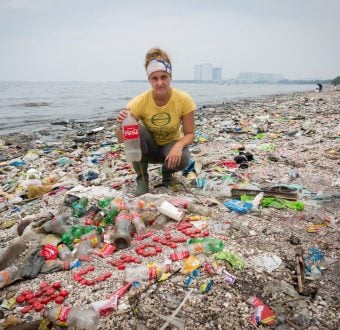On closing day of the American International Toy Fair in New
York City, Greenpeace issued its latest toy report card, grading 21
major manufacturers on their use of PVC (polyvinyl chloride or
vinyl) in children’s and baby products. While the latest grades
show some improvement over 2000, the results also show that the toy
industry — and the Consumer Product Safety Commission (CPSC) –
should be doing more to protect children from harmful additives
that are used in soft PVC.
“We are pleased that several toy companies have improved their
grades regarding PVC and toxic additive use,” said Lisa Finaldi of
Greenpeace. “Consumer pressure concerning the risks of PVC and
toxic additives in toys is making a difference. Yet, there are
still a handful of bad actors, including market leaders such as
Hasbro, that need more pressure to do the right thing.”
The report covers the nation’s largest and most popular toy
manufacturers and brand names, including Hasbro, Mattel, Safety
First and Little Tykes. Grades are based on responses from toy
companies to written and phone surveys. Out of 21 inquiries, 9
companies were given an A grade, two a B grade, three a C grade,
and 2 a D grade. The rest (5) did not reply after repeated
inquiries. No F grades were given this year.
Scientific studies have shown that toxic additives used in PVC,
known as phthalates, which make vinyl soft and flexible, are linked
to liver and kidney damage, and cancer in laboratory rats. Last
month, the Centers for Disease Control released the results of a
study documenting human exposure to 116 chemicals, including
phthalates. The study found that children have the highest level of
exposure to these toxic additives, 90% of which are used in
manufacturing PVC.
Since 1996, Greenpeace has called on toy manufacturers to stop
using toxic chemicals in baby products, meeting with industry
officials, exposing the problem through testing of products, and
raising public awareness of the problem. In November 1998,
Greenpeace and other public interest organizations filed a petition
with the CPSC to permanently ban PVC in children’s products. While
a decision has not yet been made, it is expected soon.
In response to the Greenpeace petition, in December 1998 the
CPSC announced a voluntary withdrawal of teething toys containing
one phthalate, but this action did not go far enough. In contrast,
the European Union has had a mandatory ban on six phthalates in
toys since December 1999.
“The CPSC uses its consumer
protection powers to safeguard children from toys with sharp points
or small parts that could choke them,” said Finaldi. “The agency
must protect children from chemical hazards too. It should prohibit
any phthalates and PVC in children’s products, instead of
continuing its weak voluntary agreement with the toy industry. If
the CPSC would grant our petition, every toy company in the country
would have an A.”

